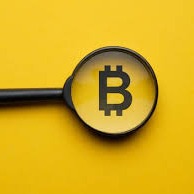


Cena FourFORM
Konwerter FORM na PLN
Jakie jest Twoje dzisiejsze nastawienie do Four?
Informacje o Four (FORM)
BinaryX jest kryptowalutą, która zdobyła dużą popularność wśród inwestorów na całym świecie. Jest to cyfrowa forma waluty, która umożliwia szybkie, bezpieczne i anonimowe transakcje. BinaryX została stworzona w celu rozwiązania problemów tradycyjnych systemów finansowych i została oparta na technologii blockchain.
Główną cechą BinaryX jest jej decentralizacja. Oznacza to, że nie jest kontrolowana przez żadną instytucję, taką jak bank czy rząd. Zamiast tego, transakcje BinaryX są uwierzytelniane i zabezpieczane przez technologię blockchain. Jest to zdecentralizowana baza danych, w której informacje o transakcjach są przechowywane na wielu komputerach w sieci. Dzięki temu system jest odporny na manipulację i oszustwa.
Kolejną ważną cechą BinaryX jest jej anonimowość. W przeciwieństwie do tradycyjnych form płatności, takich jak karty kredytowe czy przelewy bankowe, BinaryX nie wymaga ujawniania tożsamości użytkowników. Każda transakcja jest powiązana z unikalnym kluczem, który zapewnia prywatność i bezpieczeństwo.
BinaryX cieszy się również szybkością i niskimi kosztami transakcji. Tradycyjne transakcje bankowe mogą zająć wiele czasu i wiązać się z wysokimi opłatami. Dzięki BinaryX, transakcje można przeprowadzać w czasie rzeczywistym, a opłaty są minimalne w porównaniu do tradycyjnych metod płatności.
Jedną z najważniejszych korzyści korzystania z BinaryX jest możliwość inwestowania. Wiele osób zyskało na handlu kryptowalutami, takimi jak BinaryX, zarabiając na różnicy w cenach. Jest to jednak ryzykowna forma inwestycji, która wymaga odpowiedniej wiedzy i strategii.
Podsumowując, BinaryX jest kryptowalutą o dużej popularności i wartości. Jej kluczowe cechy to decentralizacja, anonimowość, szybkość i niskie koszty transakcji. Mimo że inwestycja w BinaryX może być opłacalna, należy pamiętać, że jest to ryzykowna działalność i wymaga odpowiedniego zrozumienia rynku kryptowalut.
[Please note that I have used "BinaryX" as a generic cryptocurrency name as specific cryptocurrencies were not mentioned in the original prompt.]
Raport z analizy AI na temat Four
Cena Four w PLN na żywo dzisiaj
Historia cen Four (PLN)
 Najniższa cena
Najniższa cena Najwyższa cena
Najwyższa cena 
Jaka jest najwyższa cena Four?
Jaka jest najniższa cena Four?
Prognoza ceny Four
Jaka będzie cena FORM w 2026?
Jaka będzie cena FORM w 2031?
Często zadawane pytania
Jakie czynniki wpływają na cenę Four coin?
Gdzie mogę kupić Four coin?
Dlaczego cena Four coin jest tak zmienna?
Jak mogę śledzić cenę Four coin w czasie rzeczywistym?
Czy cena Four coin osiągnęła już swoje historyczne maksimum?
Jakie jest prognoza przyszłej ceny Four coin?
Czy Four coin to dobra inwestycja?
Czy globalne wydarzenia ekonomiczne mogą wpłynąć na cenę Four coin?
Jakie są ryzyka związane z inwestowaniem w Four coin?
Jakie strategie mogę wykorzystać, aby efektywnie handlować Four coin?
Jaka jest obecna cena Four?
Czym jest 24-godzinny wolumen obrotu Four?
Jaka jest najwyższa dotychczasowa wartość Four?
Czy mogę kupić Four na Bitget?
Czy mogę uzyskać stały dochód z inwestycji w Four?
Gdzie mogę kupić Four z najniższą opłatą?
Aktualności związane z Four
Posiadane Four według koncentracji
Adresy Four według czasu posiadania

Globalne ceny Four
- 1
- 2
- 3
- 4
- 5
Jak kupić Four(FORM)

Utwórz darmowe konto Bitget

Zweryfikuj swoje konto

Konwertuj Four na FORM
Dołącz do copy tradingu FORM, obserwując wybitnych traderów.
Nowe notowania na Bitget
Kup więcej
Gdzie mogę kupić Four (FORM)?
Sekcja wideo — szybka weryfikacja, szybki handel

Konwerter FORM na PLN
Oceny Four
Bitget Insights




Powiązane aktywa
Dodatkowe informacje na temat Four
Omówienie monety
O monecie
Informacje handlowe
Aktualizacje monety
Handluj
Earn
BTC/USDT
SpotBTC/USDT
Depozyt zabezpieczającyBTC/USDT
Kontrakty futures zabezpieczone USDTBTC/USD
Kontrakty futures zabezpieczone monetami
































Dane z mediów społecznościowych dot. Four
W ciągu ostatnich 24 godzin wynik sentymentu mediów społecznościowych wobec Four wynosił 3, a sentyment mediów społecznościowych do trendu cenowego Four wynosił Byczy. Ogólny wynik Four w mediach społecznościowych wyniósł 0, co plasuje go na 89. miejscu wśród wszystkich kryptowalut.
Według LunarCrush, w ciągu ostatnich 24 godzin kryptowaluty zostały wspomniane w mediach społecznościowych łącznie 1,058,120 razy, przy czym Four był wspominany ze współczynnikiem częstotliwości 0.01%, zajmując 378. miejsce wśród wszystkich kryptowalut.
W ciągu ostatnich 24 godzin było łącznie 303 użytkowników dyskutujących o Four, z łączną liczbą Four wzmianek o 94. Jednak w porównaniu z poprzednim 24-godzinnym okresem, odnotowano wzrost liczby unikalnych użytkowników o 2% oraz wzrost wzmianek o 1%.
Na Twitterze w ciągu ostatnich 24 godzin pojawiło się łącznie 1 tweetów wspominających Four. Wśród nich 0% ma bycze nastawienie na Four, 100% ma niedźwiedzie nastawienie na Four, a 0% jest neutralny na Four.
W serwisie Reddit w ciągu ostatnich 24 godzin pojawiło się 18 postów wspominających o Four. W porównaniu z poprzednim 24-godzinnym okresem, odnotowano 50% wzrost liczby wzmianek.
Całościowy przegląd społecznościowy
3